Chhattisgarh, nestled in the heart of India, is a birdwatcher’s dream come true. With its diverse landscapes of dense forests, majestic mountains, sprawling plateaus, and winding rivers, the state provides an idyllic sanctuary for over 400 bird species.
This rich avian diversity includes both resident and migratory birds, making Chhattisgarh a vibrant hub for ornithologists and nature enthusiasts alike.
Among the state’s feathered inhabitants are some rare and endemic species that capture the imagination with their unique beauty and behaviors.
The Bastar Hill Myna, Forest Owlet, and Indian Pitta are just a few of the remarkable birds that call this region home.
These species not only enhance Chhattisgarh’s ecological tapestry but also reflect the area’s commitment to preserving its natural heritage.
Exploring Chhattisgarh’s avifauna offers a captivating glimpse into the intricate balance of nature, showcasing the fascinating adaptations and survival strategies of its winged residents.
39 Birds of Chhattisgarh
Chhattisgarh, a state in central India, is home to a diverse array of bird species. The region boasts over 355 recorded bird species, showcasing a rich avian biodiversity that includes both resident and migratory birds.
1. Cotton Pygmy Goose
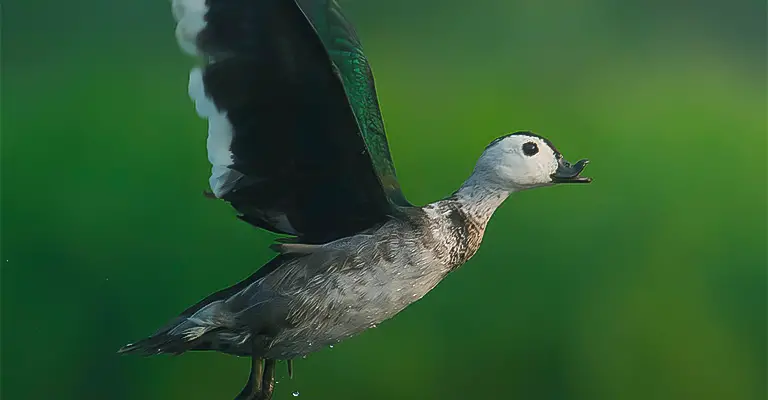
The Cotton Pygmy Goose thrives in the wetlands of Chhattisgarh. Recognizable by its striking white and green plumage, this small dabbling duck prefers freshwater lakes and ponds.
They often form flocks in regions with abundant aquatic vegetation. Feeding habits primarily revolve around seeds and small water plants, enhancing the ecosystem’s diversity.
Cotton Pygmy Geese typically nest in tree cavities near water bodies. Observers frequently spot them during the migratory season from October to March, adding to the region’s birdwatching appeal.
Scientific classification:
| Kingdom | Animalia |
| Phylum | Chordata |
| Class | Aves |
| Order | Anseriformes |
| Family | Anatidae |
| Genus | Nettapus |
| Species | N. coromandelianus |
Also Featured In: Most Common Birds in China, Native Birds Of Mackay
2. Lesser Whistling Duck
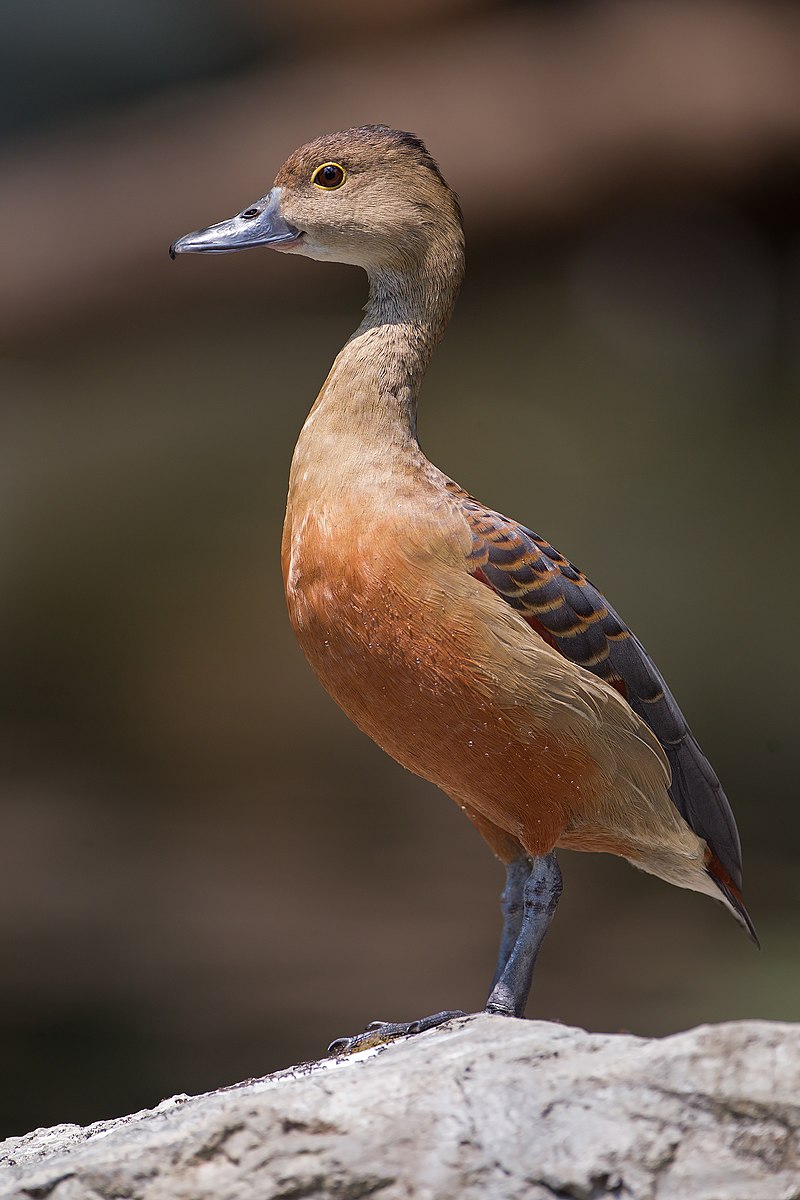
The Lesser Whistling Duck thrives in Chhattisgarh’s wetlands. Known for their melodious calls, these ducks often gather in flocks. With a distinctive brown plumage, they are easily recognizable.
They forage on aquatic plants and small invertebrates. Their nesting occurs near water bodies in thick vegetation. Sightings increase from October to March during migration.
These ducks contribute to the region’s ecological biodiversity. Birdwatchers find the Lesser Whistling Duck to be a fascinating species, adding appeal to the area’s avifauna.
Scientific classification:
| Kingdom | Animalia |
| Phylum | Chordata |
| Class | Aves |
| Order | Anseriformes |
| Family | Anatidae |
| Genus | Dendrocygna |
| Species | D. javanica |
Also Featured In: Most Common Birds of Ko Samui, Ko Samet Birds You Need To Know
3. Indian Roller
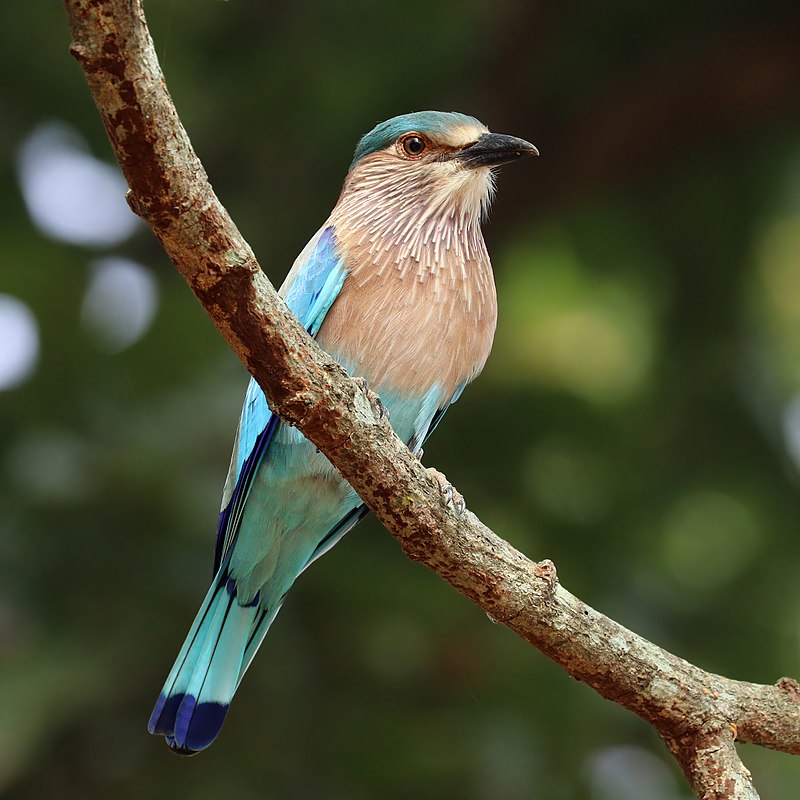
The Indian Roller, with its vibrant blue and brown plumage, is a standout in Chhattisgarh’s avian population.
Distinguished by its pinkish face and throat, this bird adds a splash of color to the skies. Its wingspan of 26–29 inches spotlights light and dark blue markings, key in flight identification.
Males and females appear similar, though males are slightly larger. Known for spectacular aerial dives, particularly during courtship, the Indian Roller’s behavior captivates birdwatchers. This species enriches Chhattisgarh’s diverse bird ecosystem.
Scientific classification:
| Kingdom | Animalia |
| Phylum | Chordata |
| Class | Aves |
| Order | Coraciiformes |
| Family | Coraciidae |
| Genus | Coracias |
| Species | C. benghalensis |
Also Featured In: Common Birds in India, Birds That You’ll See in Kaziranga National Park
4. Greater Coucal
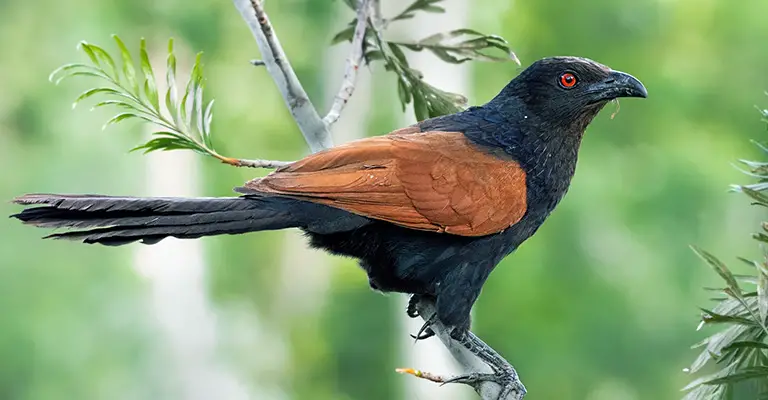
A large, crowlike bird, the Greater Coucal stands out in Chhattisgarh’s diverse avifauna. Its striking appearance includes glossy black plumage and coppery brown wings.
Primarily found in various habitats, it flourishes from jungles to suburban gardens. The bird feeds on insects and small vertebrates such as frogs and lizards.
Its distinct calls echo during the breeding season, with activity often beginning post-sundown. The ruby-red eyes of this cuckoo add to its captivating presence, making it a remarkable sight for birdwatchers.
Scientific classification:
| Kingdom | Animalia |
| Phylum | Chordata |
| Class | Aves |
| Order | Cuculiformes |
| Family | Cuculidae |
| Genus | Centropus |
| Species | C. sinensis |
Also Featured In: Hong Kong Birds You Need to See, Birds Live In Koh Kood
5. Red-Wattled Lapwing
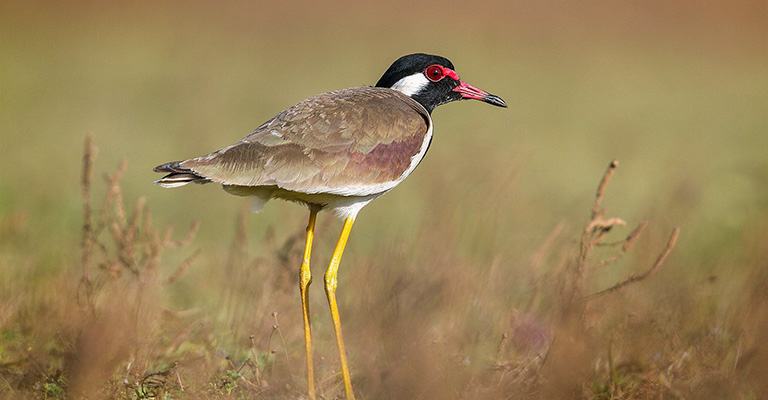
The Red-Wattled Lapwing is easily identifiable by its black feathers and white wings. Its striking reddish wattles near the eyes lend its name.
Typically found on open ground in Chhattisgarh, this bird feeds mainly on insects but also consumes seeds and grains.
During the breeding season, they form strong pair bonds, nesting in shallow depressions lined with vegetation. Eggs hatch in about 25 days, adding new life to the region’s rich avian diversity.
Scientific classification:
| Kingdom | Animalia |
| Phylum | Chordata |
| Class | Aves |
| Order | Charadriiformes |
| Family | Charadriidae |
| Genus | Vanellus |
| Species | V. indicus |
Also Featured In: Birds that Live in Uttar Pradesh, Birds of Konkan
6. Indian Cuckoo
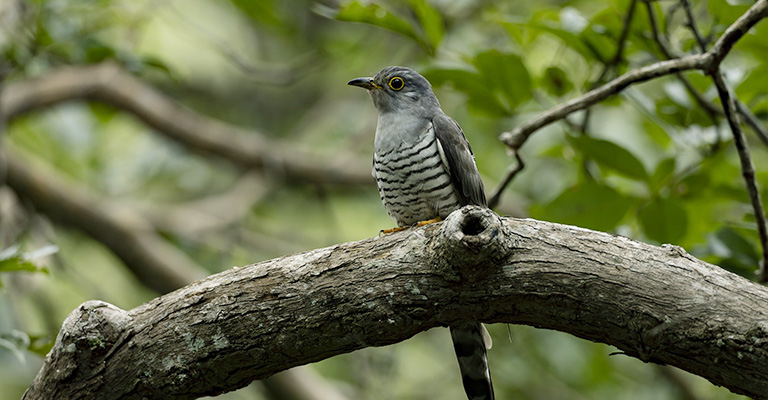
The Indian Cuckoo graces Chhattisgarh with its presence, enriching the region’s bird diversity. Found across the Indian subcontinent, this bird’s range extends to Southeast Asia. Known for its shy demeanor, it typically resides in woodlands or open forests.
The distinct “cu-coo” call is often heard during mating season, primarily from April to June. Identified by a white throat patch edged with black, it adds charm to Chhattisgarh’s avian tapestry. Its solitary nature and striking plumage capture birdwatchers’ attention in the region.
Scientific classification:
| Kingdom | Animalia |
| Phylum | Chordata |
| Class | Aves |
| Order | Cuculiformes |
| Family | Cuculidae |
| Genus | Cuculus |
| Species | C. micropterus |
7. Yellow-Wattled Lapwing
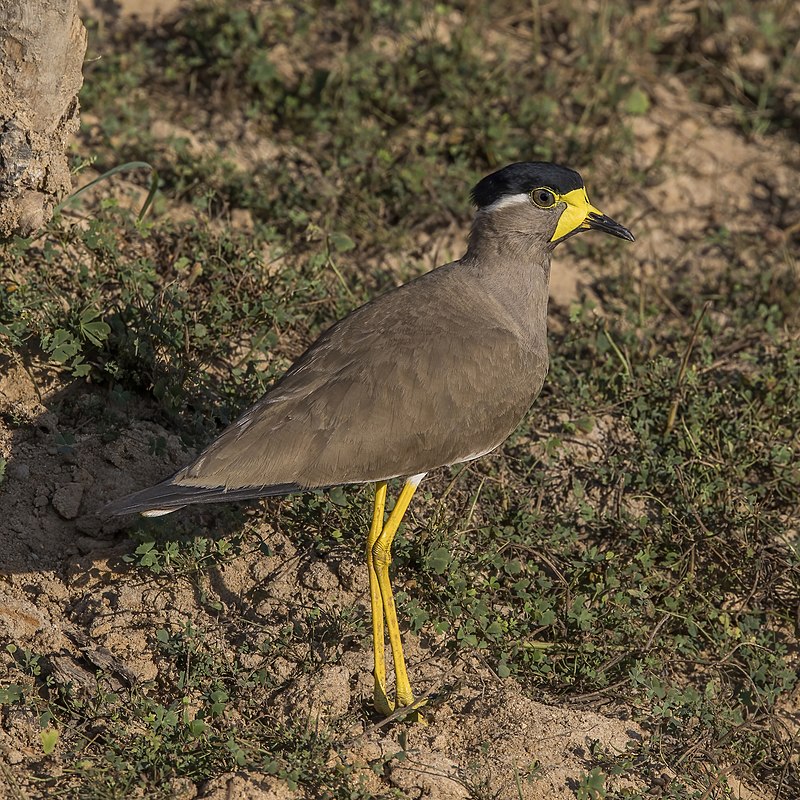
The Yellow-Wattled Lapwing captivates with its distinct hues. It exhibits a gray-brown body and a striking black cap. Bright yellow legs and a triangular neck wattle enhance its allure.
Adapted to the Indian subcontinent, it thrives in dry plains across Chhattisgarh. Though non-migratory, it adjusts its habitat with seasonal rain shifts.
Identified by sharp calls, these birds engage in fast flights. Their presence enriches Chhattisgarh’s avian diversity, making them a sought-after spectacle for birdwatchers.
Scientific classification:
| Kingdom | Animalia |
| Phylum | Chordata |
| Class | Aves |
| Order | Charadriiformes |
| Family | Charadriidae |
| Genus | Vanellus |
| Species | V. malabaricus |
8. Asian Openbill
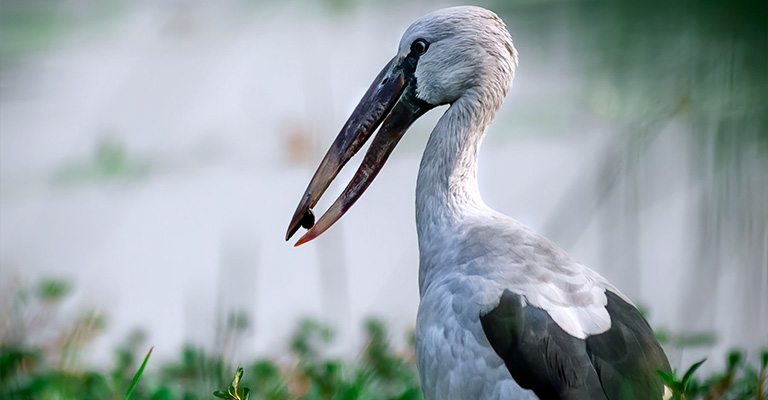
Asian Openbills inhabit Chhattisgarh’s wetlands, adding to the state’s rich biodiversity. These large storks reach up to 121 cm in height, creating a stunning spectacle in flight.
Glossy black wings and a greyish or white body characterize their appearance. Adapted to hunt in shallow waters, they feast on snails and crustaceans.
Adults display a distinctive gap in their curved bills, absent in juveniles. This physical trait aids them in extracting snails from shells, showcasing their unique ecological adaptation.
Scientific classification:
| Kingdom | Animalia |
| Phylum | Chordata |
| Class | Aves |
| Order | Ciconiiformes |
| Family | Ciconiidae |
| Genus | Anastomus |
| Species | A. oscitans |
Also Featured In: Big Birds that Live in Singapore,
9. Indian Courser
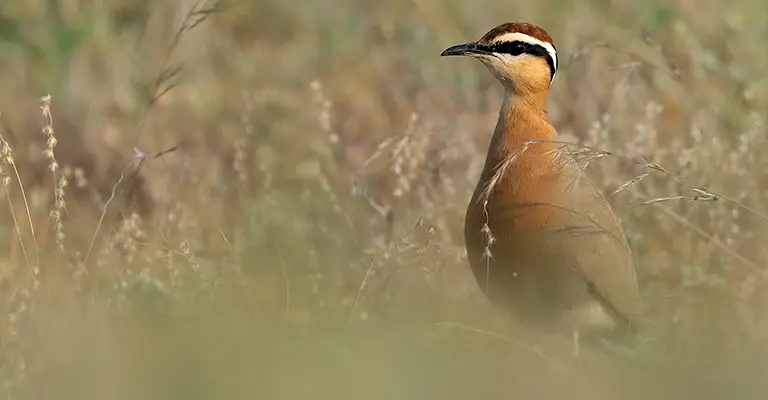
The Indian Courser inhabits the semidesert areas of Chhattisgarh. Small groups often forage on grasshoppers and beetles, contributing to pest control.
This striking bird features white stripes on its back and a black neck ring. Found predominantly around the Ganges and Indus river systems, it prefers warm, dry climates.
The Indian Courser’s adaptability to different food sources helps it thrive, yet its habitat faces threats from human encroachment. Conservation efforts might protect this unique bird species from potential decline.
Scientific classification:
| Kingdom | Animalia |
| Phylum | Chordata |
| Class | Aves |
| Order | Charadriiformes |
| Family | Glareolidae |
| Genus | Cursorius |
| Species | C. coromandelicus |
Also Featured In: Native Pakistani Birds,
10. Indian Pond Heron
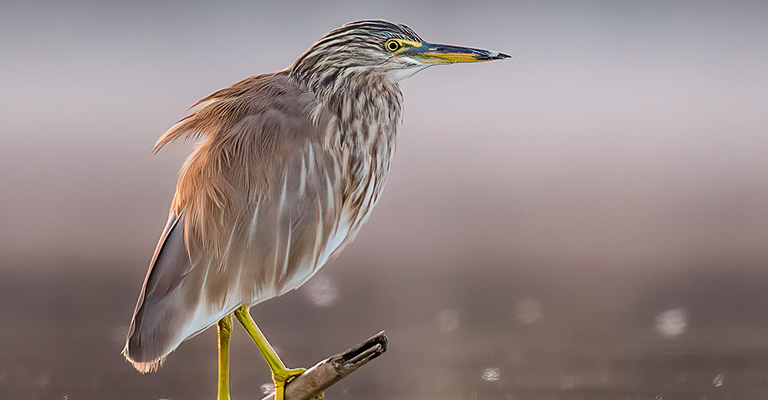
The Indian Pond Heron enhances Chhattisgarh’s wetlands with its presence. Also known as Paddybird, this small heron exhibits a buff-brown back and short neck.
During flight, white wing patches make it easily noticeable. It primarily preys on fish, frogs, and insects. Breeding occurs near water bodies, where it builds nests of reeds.
In this region, migration and nesting contribute to birdwatching opportunities, enriching the ecosystem’s diversity.
Scientific classification:
| Kingdom | Animalia |
| Phylum | Chordata |
| Class | Aves |
| Order | Pelecaniformes |
| Family | Ardeidae |
| Genus | Ardeola |
| Species | A. grayii |
Also Featured In: Birds of Islamabad, Birds That Live In Phuket Island
11. Indian Golden Oriole
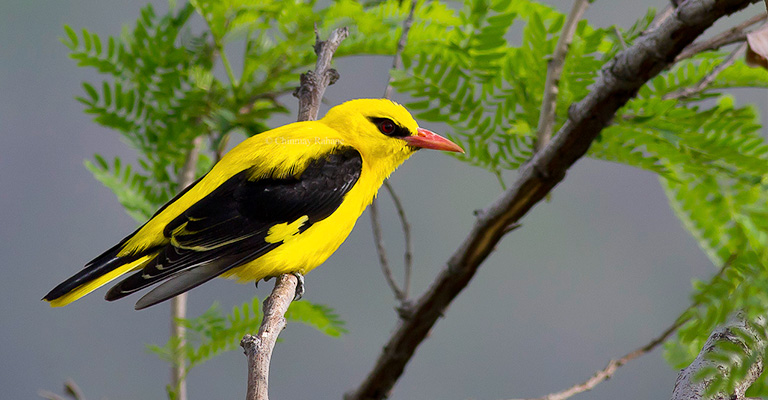
The Indian Golden Oriole, a vivid yellow bird, attracts birdwatchers in Chhattisgarh. Males exhibit more vibrant colors than females, with black wings and tails adorned with white patches.
Distinguished by its black eye stripe extending behind the eyes, this species stands apart from the Eurasian Golden Oriole.
Adopting a varied diet, they consume insects, fruits, and nectar, sometimes adding small reptiles. These orioles nest high in tree branches during spring migrations, ensuring a remarkable sight for enthusiasts.
Scientific classification:
| Kingdom | Animalia |
| Phylum | Chordata |
| Class | Aves |
| Order | Passeriformes |
| Family | Oriolidae |
| Genus | Oriolus |
| Species | O. kundoo |
Also Featured In: Most Common Birds of Bihar,
12. White-Eyed Buzzard
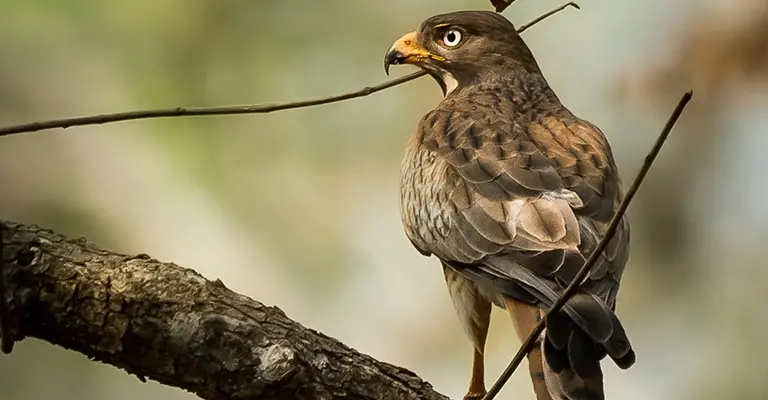
The White-Eyed Buzzard, a medium-sized hawk native to South Asia, thrives in Chhattisgarh’s landscapes. Known for its distinctive white iris, this buzzard has a brown head and rufous tail.
The upper wings bear pale median coverts, contrasting with the dark mesial stripe on its throat. It preys on small mammals such as rodents and lizards, occasionally adding snakes and large insects like locusts to its diet.
This hawk significantly contributes to the region’s ecological balance by controlling pest populations.
Scientific classification:
| Kingdom | Animalia |
| Phylum | Chordata |
| Class | Aves |
| Order | Accipitriformes |
| Family | Accipitridae |
| Genus | Butastur |
| Species | B. teesa |
13. Cinnamon Bittern
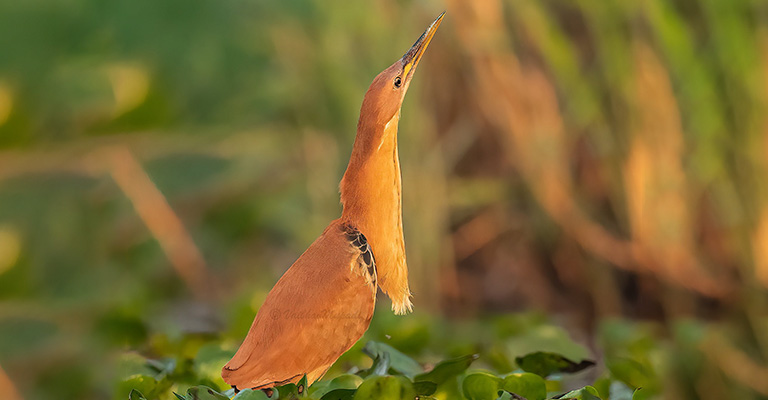
The Cinnamon Bittern is a small resident bird in Chhattisgarh’s lush wetlands, found specifically in areas with abundant vegetation.
Its chestnut brown back and wings distinguish it from other birds, complemented by white streaks that cover its body. During the breeding season from April to August, the bird sports yellowish-brown plumage on its head, neck, and breast.
Black legs help identify this species, mainly when seen near shallow, densely vegetated water bodies. They feed on fish, insects, frogs, and crustaceans.
Scientific classification:
| Kingdom | Animalia |
| Phylum | Chordata |
| Class | Aves |
| Order | Pelecaniformes |
| Family | Ardeidae |
| Genus | Ixobrychus |
| Species | I. cinnamomeus |
Also Featured In: Birds that Commonly Found in Bali,
14. Coppersmith Barbet
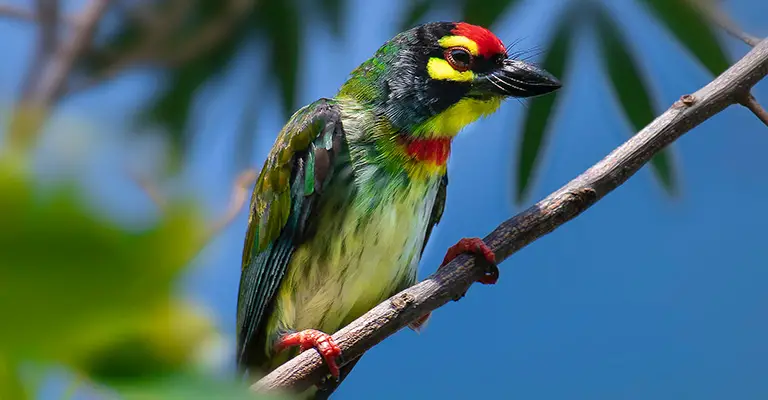
The Coppersmith Barbet showcases vibrant green plumage with a striking red head, yellow cheeks, and throat. Measuring between 15–17 cm, this bird adds a splash of color to Chhattisgarh’s forests.
Its distinctive call resembles the sound of metal striking metal. The barbet’s underparts display gray and black streaks, while seasonal feather wear sometimes lends a bluish tinge to its back.
Feeding on fruits and insects, the Coppersmith Barbet plays a role in seed dispersal in the region’s ecosystem.
Scientific classification:
| Kingdom | Animalia |
| Phylum | Chordata |
| Class | Aves |
| Order | Piciformes |
| Family | Megalaimidae |
| Genus | Psilopogon |
| Species | P. haemacephalus |
Also Featured In: Most Common Types of Bangladeshi Birds, Common Birds of Mumbai
15. Brown Fish Owl
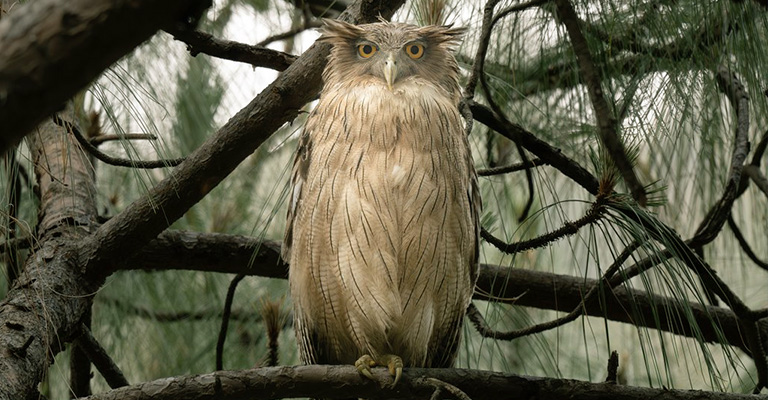
The Brown Fish Owl thrives in Chhattisgarh’s forested wetlands. Known for its diet, it mostly eats fish but also consumes small mammals and reptiles.
Using powerful talons, it hunts from trees at night. Monogamous pairs incubate eggs in tree hollows or rock crevices.
This owl species, found across South and Southeast Asia, is abundant and classified as least concern by the IUCN. Its habitat preferences and survival strategies underscore its adaptability in diverse landscapes.
Scientific classification:
| Kingdom | Animalia |
| Phylum | Chordata |
| Class | Aves |
| Order | Strigiformes |
| Family | Strigidae |
| Genus | Ketupa |
| Species | K. zeylonensis |
16. Crested Honey Buzzard
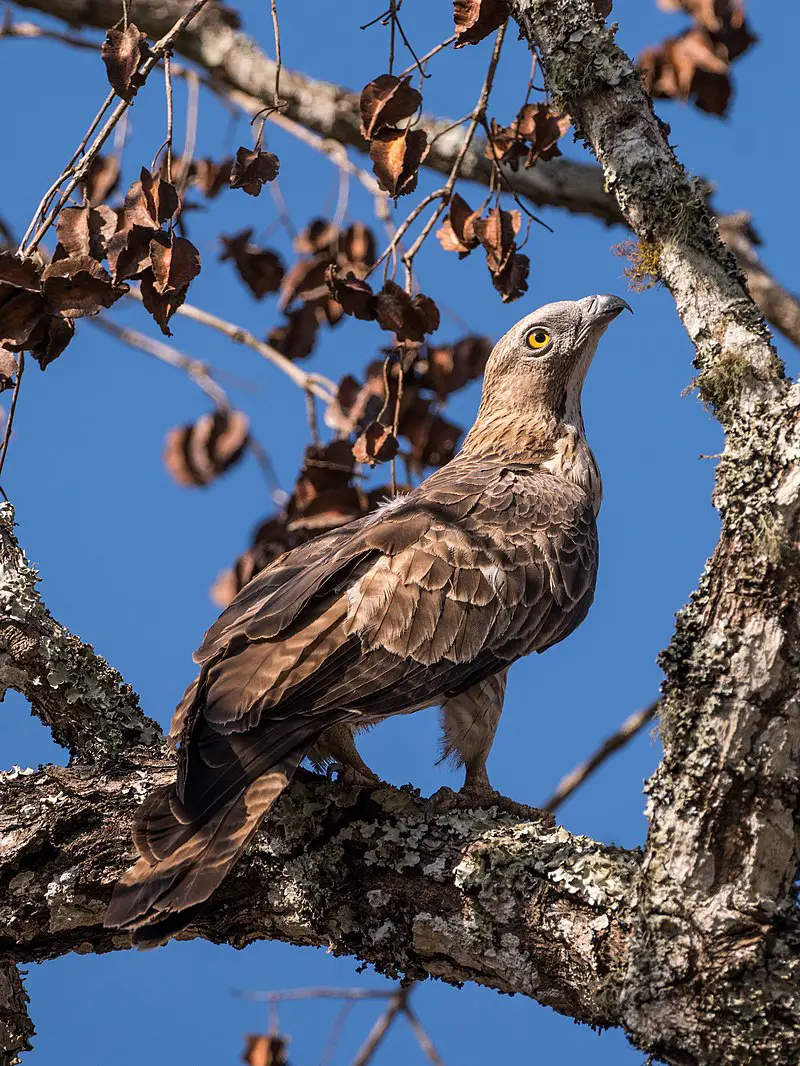
The Crested Honey Buzzard enriches Chhattisgarh’s biodiversity with its medium-sized frame measuring between 57 and 60 cm.
Found across Asia, this bird is also known as the Oriental Honey Buzzard. Their diet focuses on honeybees and wasps, helping control insect populations.
These buzzards exhibit swift flight, reaching speeds of up to 70 km/h. With six subspecies, some feature white tail tips while others display brownish-black wings and chestnut-colored bodies.
Scientific classification:
| Kingdom | Animalia |
| Phylum | Chordata |
| Class | Aves |
| Order | Accipitriformes |
| Family | Accipitridae |
| Genus | Pernis |
| Species | P. ptilorhynchus |
Also Featured In: Native South Korean Birds,
17. Chestnut-Bellied Sandgrouse
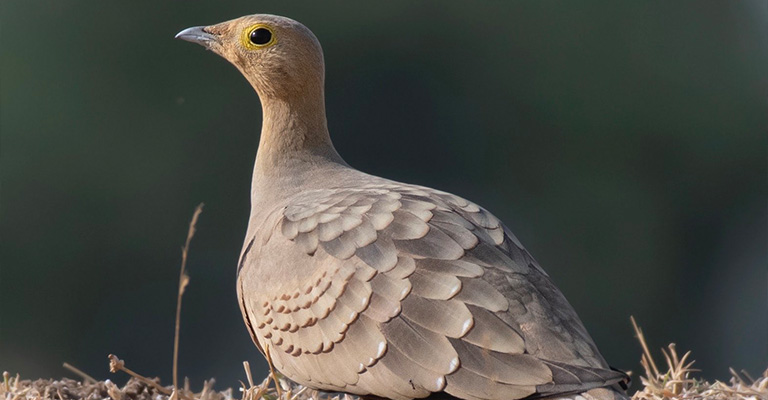
The Chestnut-Bellied Sandgrouse showcases its distinct plumage, with males displaying buffy brown feathers adorned with dark bars on the wings.
Females present a subtler, greyer appearance. Originating from areas across northern and central Africa, as well as parts of Asia, this species is vital in seed dispersion.
It thrives in Chhattisgarh’s semi-arid landscapes, complementing the region’s ecological diversity.
These birds often gather in social structures known as leks for intricate courtship displays, further enriching the area’s avifaunal tapestry.
Scientific classification:
| Kingdom | Animalia |
| Phylum | Chordata |
| Class | Aves |
| Order | Pterocliformes |
| Family | Pteroclidae |
| Genus | Pterocles |
| Species | P. exustus |
Also Featured In: Oman Birds, Hawaii Big Island Birds You Should Know
18. Black Bittern
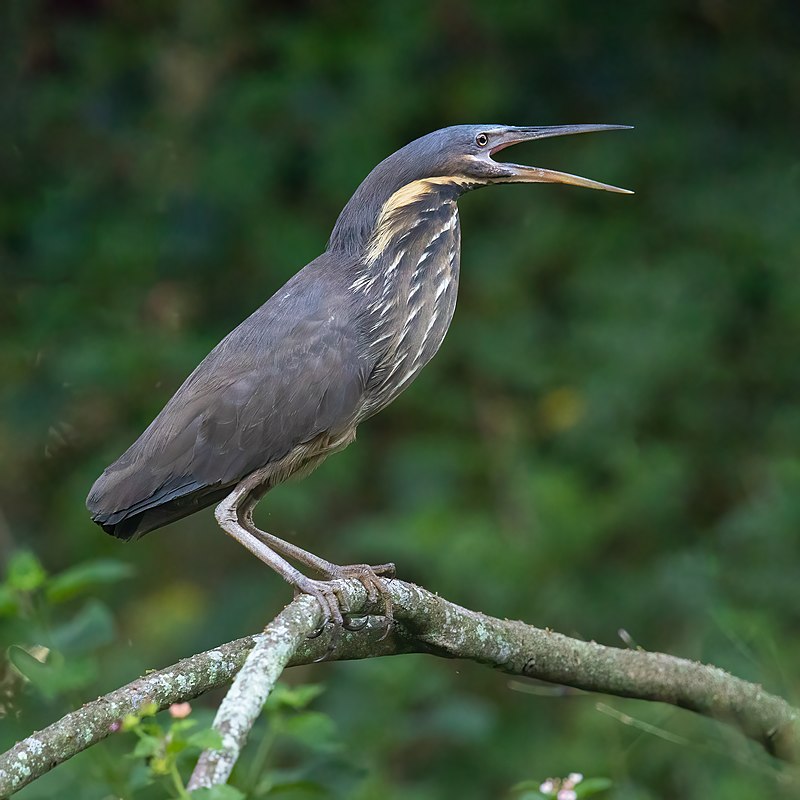
The Black Bittern stands out in Chhattisgarh’s diverse habitats. It’s a large bird, measuring 58 cm, and easily recognizable.
Glossy black feathers adorn its back, complemented by white stripes on the sides. Dark brown upperparts enhance its disguise in dense vegetation.
Yellow-brown underparts offer a contrasting view. Common across tropical Asia, this species thrives along water-rich areas.
It adds to the state’s ecological diversity, preferring locales that ensure ample food supply and protection from predators.
Scientific classification:
| Kingdom | Animalia |
| Phylum | Chordata |
| Class | Aves |
| Order | Pelecaniformes |
| Family | Ardeidae |
| Genus | Ixobrychus |
| Species | I. flavicollis |
Also Featured In: Herons Species, Common Birds that Live in Odisha
19. Mottled Wood Owl
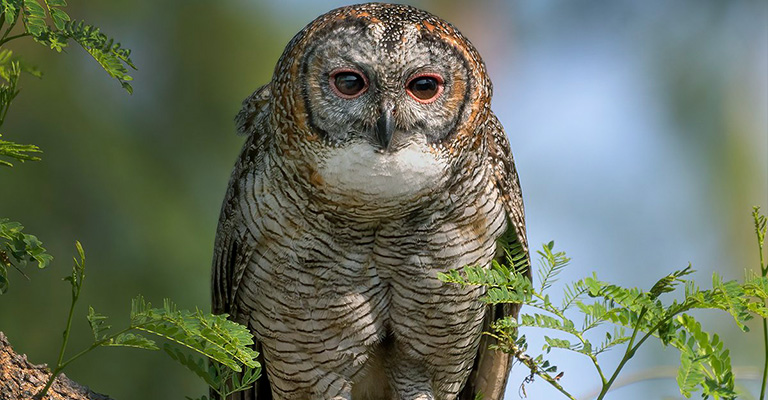
The Mottled Wood Owl, a native of India, stands out in Chhattisgarh’s woodlands with its distinct mottled feathers.
Despite their intimidating size, these owls are timid, preferring solitude. Gardens and deciduous forests are their typical habitats, especially near farmlands and thorn forests.
They excel at locating rodents like rats and mice using exceptional hearing. Notable for eerie dawn and dusk calls, these owls converse in duets.
Their presence enhances the ecological fabric of Chhattisgarh’s diverse avian landscape.
Scientific classification:
| Kingdom | Animalia |
| Phylum | Chordata |
| Class | Aves |
| Order | Strigiformes |
| Family | Strigidae |
| Genus | Strix |
| Species | S. ocellata |
Also Featured In: Owls Species,
20. Yellow-Crowned Woodpecker
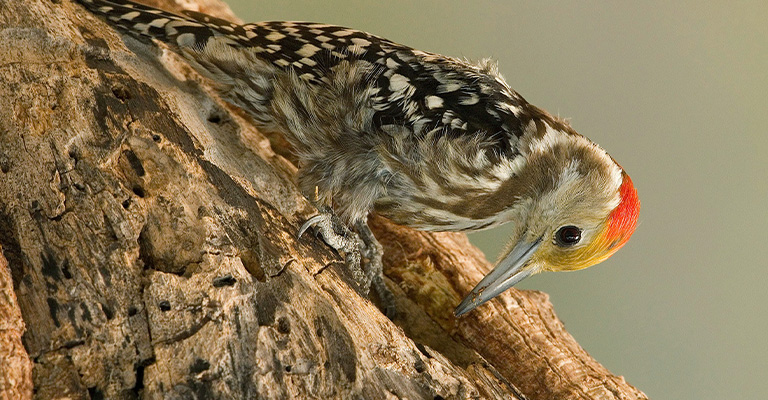
The Yellow-Crowned Woodpecker adds unique charm to Chhattisgarh’s avian diversity. Found in the Indian subcontinent, this small bird has black upperparts with striking white wing stripes and yellow crowns.
It camouflages well with greyish or brownish underparts. Feeding primarily on insects like ants and beetles, it’s a vital insect controller.
Occasionally, it eats fruits, contributing to seed dispersal. The region’s open forests provide ideal habitats, supporting its ecological role.
Scientific classification:
| Kingdom | Animalia |
| Phylum | Chordata |
| Class | Aves |
| Order | Piciformes |
| Family | Picidae |
| Genus | Leiopicus Bonaparte, 1854 |
| Species | L. mahrattensis |
Also Featured In: Woodpeckers Species, Birds that Live in Rajasthan
21. Shikra
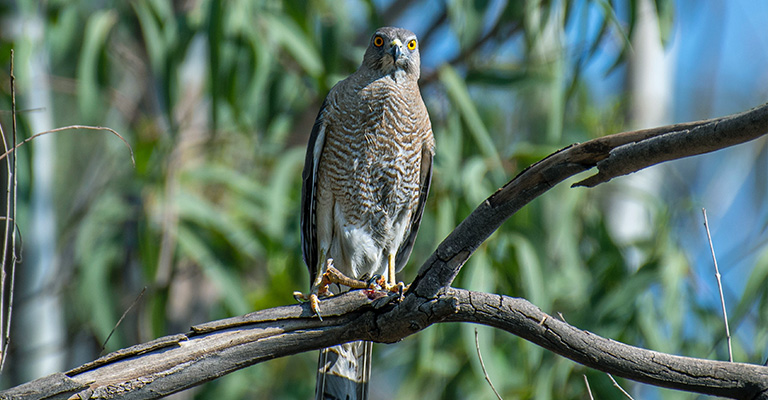
Shikra, an agile raptor, inhabits Chhattisgarh’s varied landscapes. This bird, known for its slate-gray plumage and distinct red eyes, often perches on tree tops.
Contributing to pest control, it preys on small mammals, birds, and insects. During the breeding season, Shikra builds nests high in trees, ensuring safety for its young.
Its ability to adapt to different environments makes it a common sight in rural and urban areas, enriching Chhattisgarh’s avian biodiversity.
Scientific classification:
| Kingdom | Animalia |
| Phylum | Chordata |
| Class | Aves |
| Order | Accipitriformes |
| Family | Accipitridae |
| Genus | Accipiter |
| Species | A. badius |
Also Featured In: Birds That Live in the Jungle, Native Birds of Kazakhstan
22. Brown-Headed Barbet
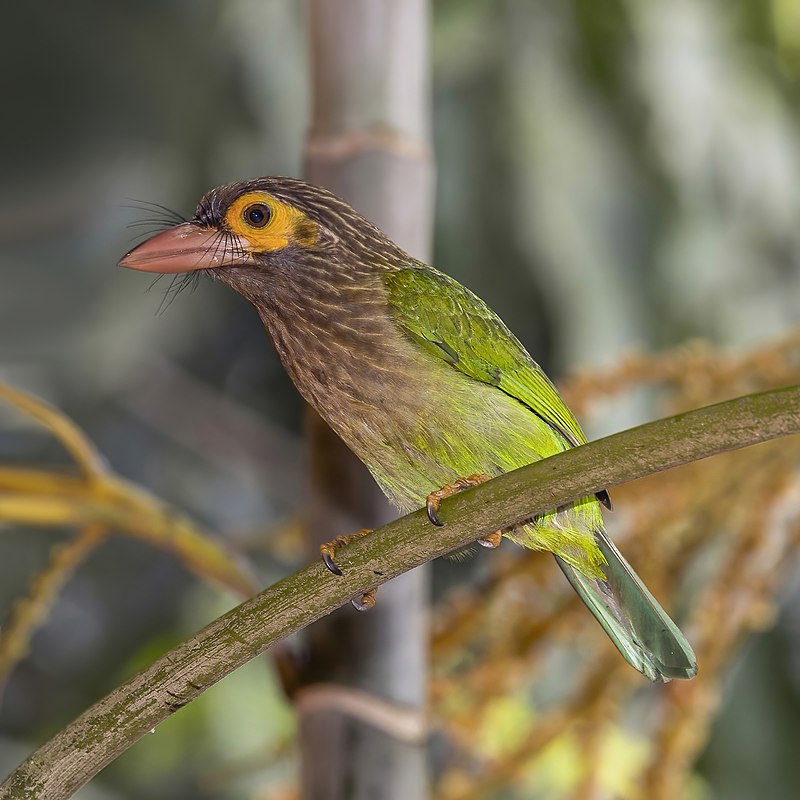
The Brown-Headed Barbet features a distinct brown head and vibrant green body. Considered a species of least concern, it thrives in Chhattisgarh’s moist broadleaf forests.
These cavity nesters make homes in tree holes, and their resonant calls are a delight for birdwatchers.
Eating fruits and insects, barbets use strong beaks to crack nuts and seeds. Deforestation poses threats to their habitats, yet they remain a vibrant component of the region’s avifauna. Their presence enriches birdwatching experiences in Chhattisgarh.
Scientific classification:
| Kingdom | Animalia |
| Phylum | Chordata |
| Class | Aves |
| Order | Piciformes |
| Family | Megalaimidae |
| Genus | Psilopogon |
| Species | P. zeylanicus |
Also Featured In: Birds of Goa, Delhi Birds You Need to See
23. Spotted Owlet
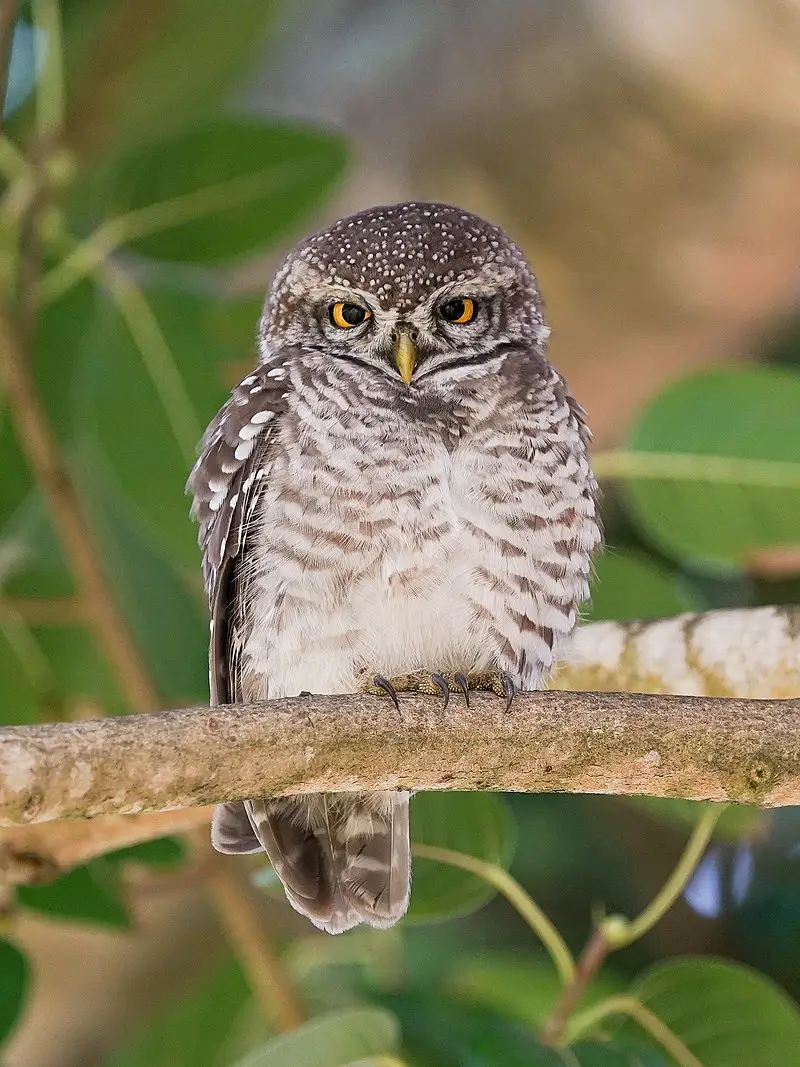
The Spotted Owlet, often found in urban Chhattisgarh, displays remarkable adaptability to human environments.
This small bird species often roosts in tree cavities or building crevices. They’re easily identified by their distinctive spotted plumage. Typically, they nest in tree holes, laying 3-5 eggs each season.
The Spotted Owlet’s ability to coexist with humans underscores its adaptability, making it a beloved sight in many Chhattisgarh neighborhoods. Their omnipresence in open habitats like farmland reflects their ecological versatility.
Scientific classification:
| Kingdom | Animalia |
| Phylum | Chordata |
| Class | Aves |
| Order | Strigiformes |
| Family | Strigidae |
| Genus | Athene |
| Species | A. brama |
Also Featured In: Common Birds in Bangalore, Common Birds of Maharashtra
24. Jungle Owlet
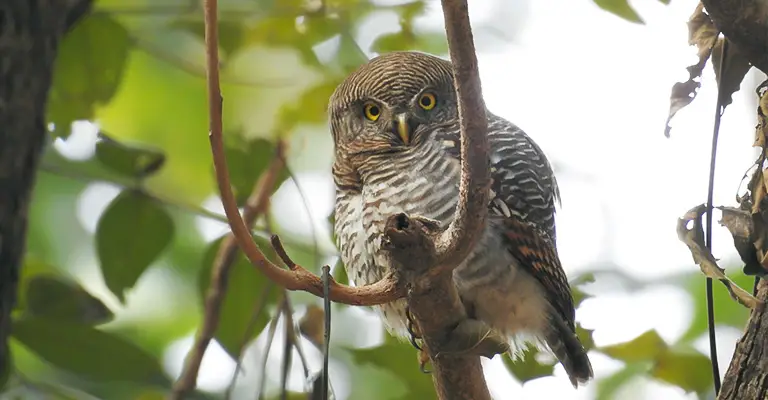
The Jungle Owlet, a native of the Indian Subcontinent, often resides in solitary or small group settings.
This bird features a rounded head, with finely barred plumage covering its body. Its calls echo at dawn and dusk, adding to its enigmatic presence.
Only two subspecies exist, including one in the Western Ghats, which might be a separate species. It thrives in gardens and thin deciduous forests, maneuvering near dry thorn forests and farmland with ease.
Scientific classification:
| Kingdom | Animalia |
| Phylum | Chordata |
| Class | Aves |
| Order | Strigiformes |
| Family | Strigidae |
| Genus | Glaucidium |
| Species | G. radiatum |
Also Featured In: Gujarati Birds, Common Birds in Kerala
25. Chestnut-Headed Bee-Eater
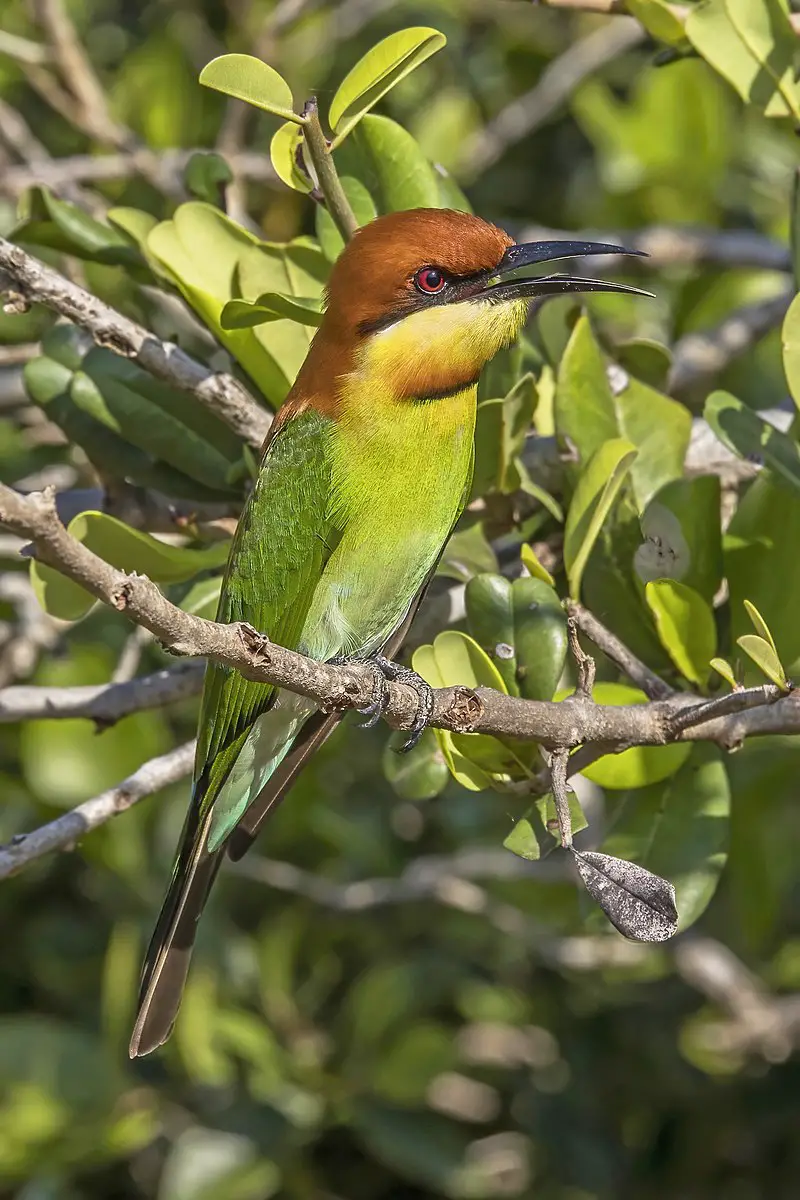
The Chestnut-Headed Bee-Eater, a striking avian found in Chhattisgarh, enchants with vibrant plumage. This bird sports a bright chestnut head paired with brilliant green wings.
Known for its insect diet, it specializes in catching bees and wasps in flight. Preferring open woodlands and forest edges, it enhances the visual appeal of the region.
During breeding season, these birds excavate tunnels in sandy banks for nesting, contributing to the ecological cycle. Their presence underscores Chhattisgarh’s rich avifaunal tapestry.
Scientific classification:
| Kingdom | Animalia |
| Phylum | Chordata |
| Class | Aves |
| Order | Coraciiformes |
| Family | Meropidae |
| Genus | Merops |
| Species | M. leschenaulti |
26. Crested Treeswift
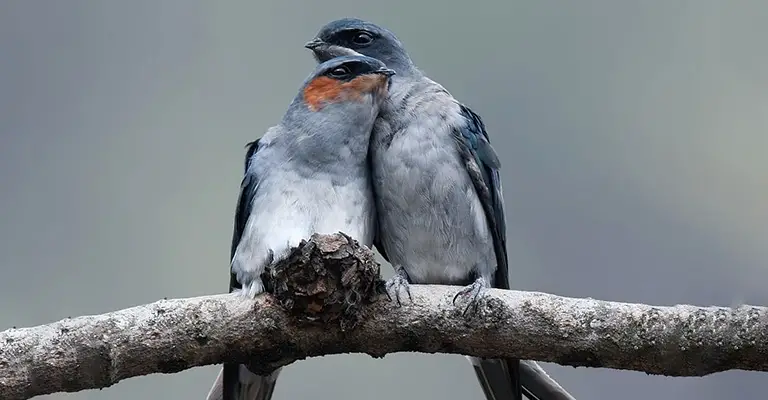
The Crested Treeswift adds beauty to Chhattisgarh’s skies with its aerodynamic form. It’s recognized by its long, bowed wings and a distinctive crested head.
Found primarily in forested areas, this bird’s agile flight aids in catching insects mid-air. It stands apart due to its deeply forked tail and its capacity to navigate long distances effortlessly.
Often confused with the Gray-rumped Treeswift, it maintains its unique identity within overlapping habitats. The presence of this species enriches Chhattisgarh’s vibrant avian diversity.
Scientific classification:
| Kingdom | Animalia |
| Phylum | Chordata |
| Class | Aves |
| Clade | Strisores |
| Order | Apodiformes |
| Family | Hemiprocnidae |
| Genus | Hemiprocne |
| Species | H. coronata |
27. Red-Naped Ibis
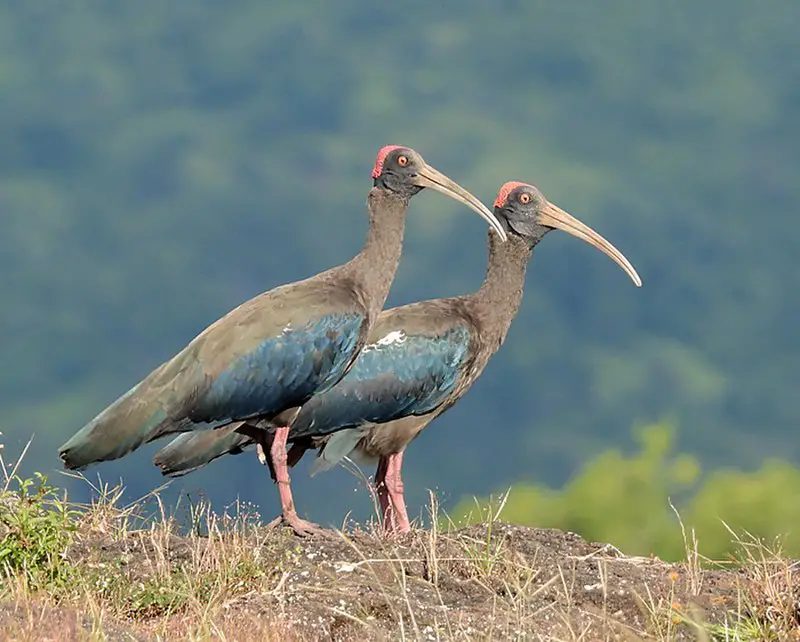
The Red-Naped Ibis, or Indian Black Ibis, thrives across the Indian Subcontinent, seen in the dry fields of Chhattisgarh.
Easily identified by a dark body and white neck patch, it adapts to various environments. Feeding on insects, small reptiles, and birds, this ibis helps control pests, benefiting the ecosystem.
Not needing water proximity, it gathers in loose groups. Its population remains stable, making it a favorite among birdwatchers.
Scientific classification:
| Kingdom | Animalia |
| Phylum | Chordata |
| Class | Aves |
| Order | Pelecaniformes |
| Family | Threskiornithidae |
| Genus | Pseudibis |
| Species | P. papillosa |
Also Featured In: Birds of Karnataka, Birds You’ll Find in Kanha National Park
28. Plain Prinia
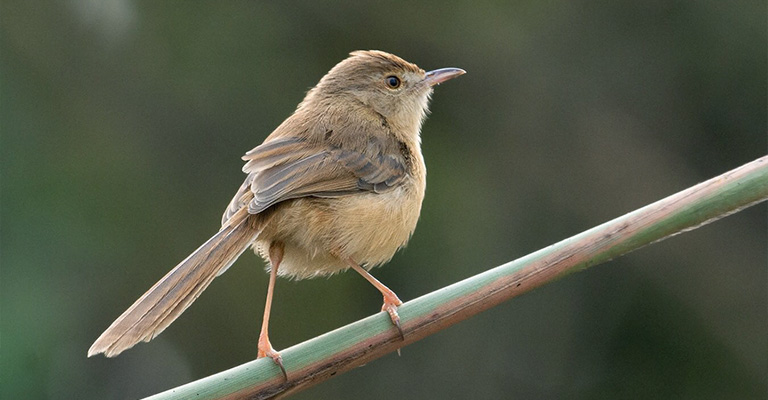
The Plain Prinia thrives in the grasslands and scrublands of Chhattisgarh. This small warbler, characterized by its slender tail and white underparts, frequently flutters through low shrubs.
While its soft, repetitive call fills the air, it primarily feeds on insects. It often uses its fast, darting flight to navigate dense vegetation.
By constructing nests close to the ground, it ensures protection against predators. This adaptability allows the Plain Prinia to maintain a stable presence in varying habitats, contributing significantly to the region’s avian diversity.
Scientific classification:
| Kingdom | Animalia |
| Phylum | Chordata |
| Class | Aves |
| Order | Passeriformes |
| Family | Cisticolidae |
| Genus | Prinia |
| Species | P. inornata |
29. Ashy-Crowned Sparrow-Lark

The Ashy-Crowned Sparrow-Lark inhabits open lands across South Asia. Recognizable features in males include a black and white face pattern.
Females resemble female sparrows with their sandy brown coloring. Although small, these birds stay active, hopping and flying frequently.
Their singing can be heard often during the breeding season. As an integral part of the ecosystem, they contribute to maintaining the food chain’s balance. Scientifically, they belong to the genus Eremopterix and species E. griseus.
Scientific classification:
| Kingdom | Animalia |
| Phylum | Chordata |
| Class | Aves |
| Order | Passeriformes |
| Family | Alaudidae |
| Genus | Eremopterix |
| Species | E. griseus |
Also Featured In: Common Birds of Jharkhand, Most Common Madhya Pradesh Birds
30. Small Minivet
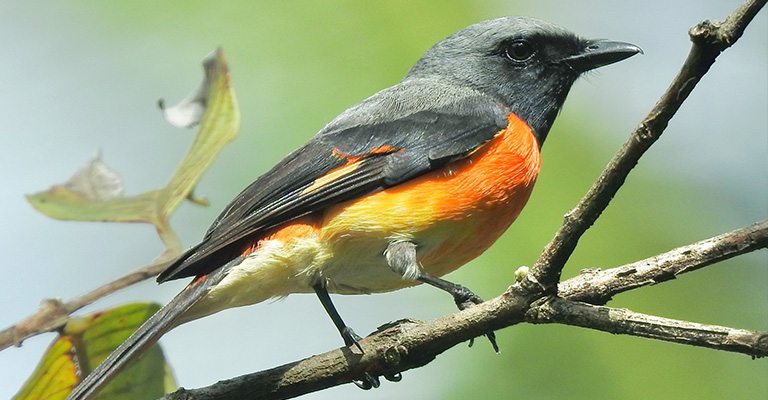
The Small Minivet, a passerine bird in tropical southern Asia, stands out with vibrant coloration. It measures approximately 16 cm long and exhibits distinctive sexual dimorphism.
Males feature grey upperparts and an orange-to-yellow gradient on the underparts. Though small, it’s ecologically significant, aiding in insect population control.
Its robust, dark beak helps construct intricate nests, enhancing survival. The vivid colors and dynamic behavior make the Small Minivet an intriguing species among Chhattisgarh’s avian diversity.
Scientific classification:
| Kingdom | Animalia |
| Phylum | Chordata |
| Class | Aves |
| Order | Passeriformes |
| Family | Campephagidae |
| Genus | Pericrocotus |
| Species | P. cinnamomeus |
Also Featured In: Birds that Commonly Found in Andhra Pradesh,
31. White-Browed Fantail
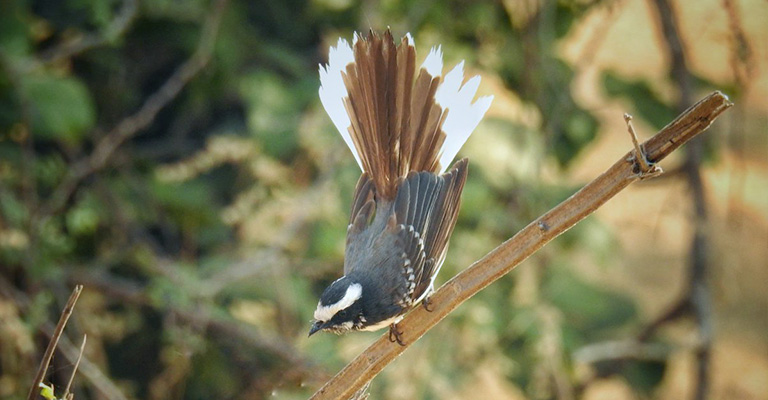
The White-Browed Fantail graces Chhattisgarh with its charming presence. This small bird, just 18 cm long, flaunts a dark brown upper body adorned with white wing spots.
Its fan-shaped tail, edged in white, adds to its striking silhouette. Distinctive facial features include a long white supercilia meeting at the forehead, a blackish eye mask, and a bordered white mustache. Often seen in gardens, it contributes to the region’s avian spectacle.
Scientific classification:
| Kingdom | Animalia |
| Phylum | Chordata |
| Class | Aves |
| Order | Passeriformes |
| Family | Rhipiduridae |
| Genus | Rhipidura |
| Species | R. aureola |
32. Indian Nightjar
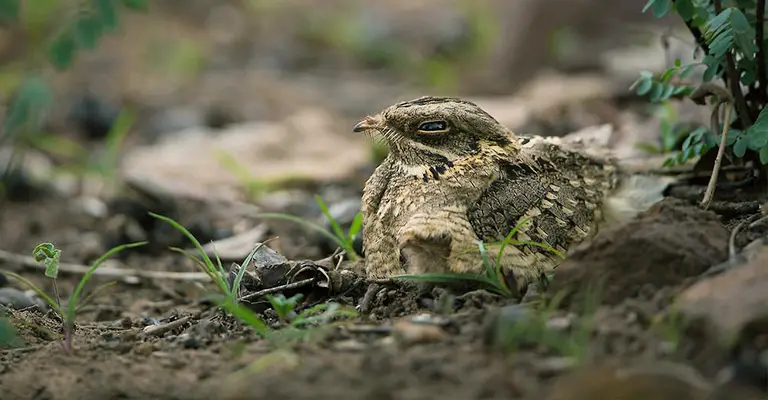
The Indian Nightjar, a small nocturnal bird, thrives in the open areas of Chhattisgarh, offering a unique experience for birdwatchers.
It possesses crepuscular habits, showing peak activity at dawn and dusk. Its clicking calls, reminiscent of a stone on ice, make it easily identifiable.
Favoring open landscapes, it finds insects to sustain its diet, enhancing the region’s nocturnal soundscape.
This elusive avian resident breeds within the same area year-round, contributing to the diversity of Chhattisgarh’s rich birdlife.
Scientific classification:
| Kingdom | Animalia |
| Phylum | Chordata |
| Class | Aves |
| Clade | Strisores |
| Order | Caprimulgiformes |
| Family | Caprimulgidae |
| Genus | Caprimulgus |
| Species | C. asiaticus |
Also Featured In: Birds that Live in Tamil Nadu, Birds of Andhra Pradesh
33. Black-Headed Cuckooshrike
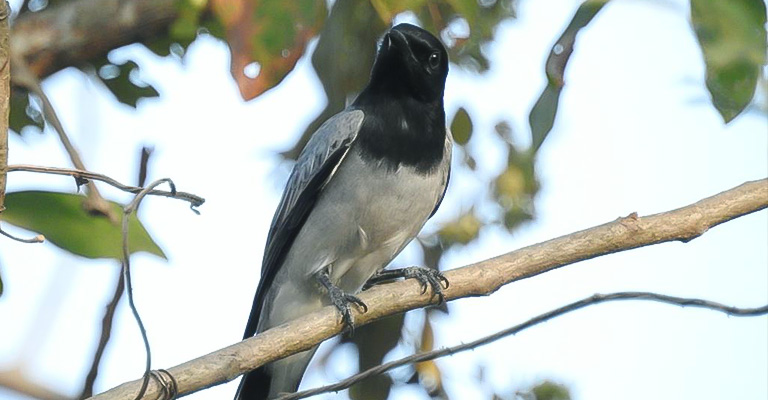
The Black-Headed Cuckooshrike graces the Indian subcontinent, showcasing a distinct sexual dimorphism.
Males feature a striking black head and white underparts, while females appear brownish-gray with a white belly.
Their habitats span forests and gardens where they hunt insects and berries. Easily identified by their melodic calls, these birds infuse Chhattisgarh’s mornings with their beautiful songs.
As part of the region’s vibrant birdlife, the Black-Headed Cuckooshrike adds to Chhattisgarh’s rich avian tapestry.
Scientific classification:
| Kingdom | Animalia |
| Phylum | Chordata |
| Class | Aves |
| Order | Passeriformes |
| Family | Campephagidae |
| Genus | Lalage |
| Species | L. melanoptera |
Also Featured In: Birds that You’ll Find in Kolkata,
34. Brown Crake
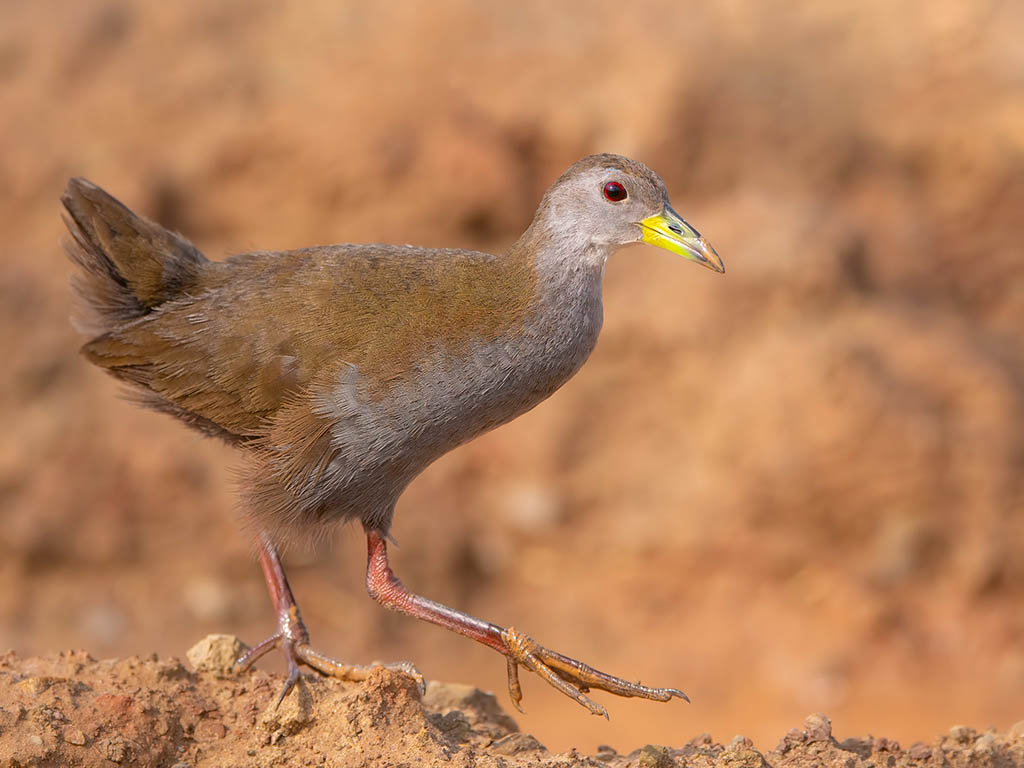
The Brown Crake resides in Chhattisgarh’s wetland areas. This elusive bird features brown plumage with a distinctive red bill, which blends into its aquatic habitat.
They primarily feed on insects, small fish, and aquatic plants, contributing to the ecological balance of their environment.
Despite being relatively common, their shy nature makes sightings rare. Conservationists recognize their importance in the ashideographic region of South Asia, where they represent an integral part of the avian community.
Scientific classification:
| Kingdom | Animalia |
| Phylum | Chordata |
| Class | Aves |
| Order | Gruiformes |
| Family | Rallidae |
| Genus | Zapornia |
| Species | Z. akool |
35. Ruddy-Breasted Crake
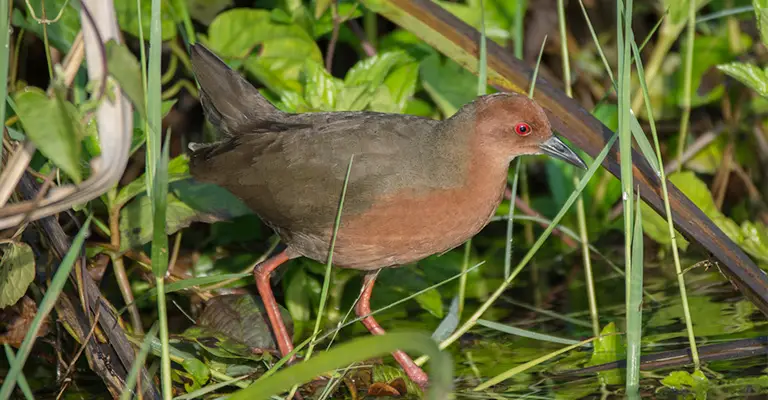
The Ruddy-Breasted Crake stands out with its reddish-brown breast. This small waterbird thrives in swampy areas, particularly in regions with abundant water supply.
It belongs to the Rallidae family and resides in South Asia, including parts of Chhattisgarh. Known for its distinctive call, the crake often remains hidden due to its elusive nature.
Fiercely territorial, it defends its habitat from other birds. Despite habitat challenges, it holds a status of Least Concern in conservation.
Scientific classification:
| Kingdom | Animalia |
| Phylum | Chordata |
| Class | Aves |
| Order | Gruiformes |
| Family | Rallidae |
| Genus | Zapornia |
| Species | Z. fusca |
36. Rain Quail
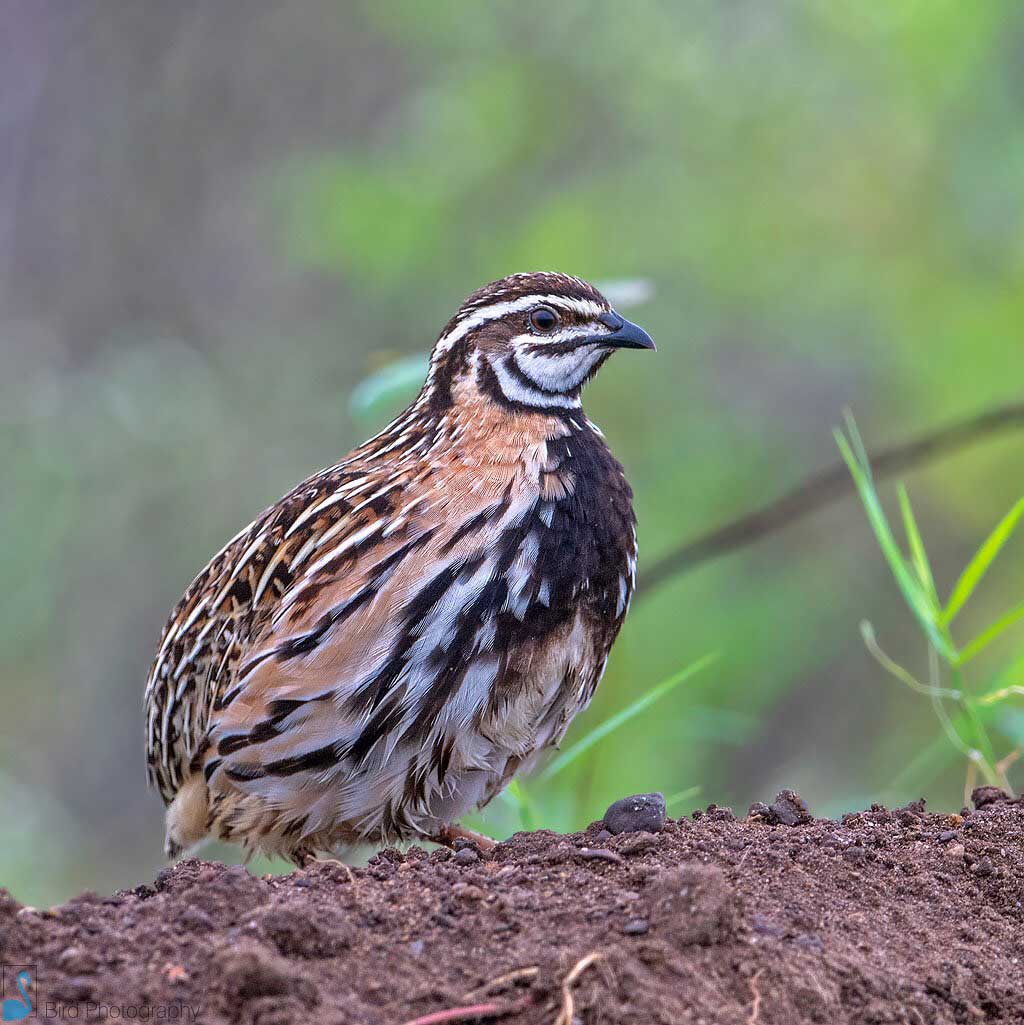
The Rain Quail, also known as the Black-Breasted Quail, adds diversity to Chhattisgarh’s avifauna. Native to Southeast Asia and the Indian Subcontinent, this bird prefers areas like India, Sri Lanka, and Nepal.
Johann Friedrich Gmelin first described it in 1789, highlighting its small size and distinctive black head stripes.
The bird’s name, Rain Quail, reflects its tendency to breed in rainy seasons. It’s important in game hunting, and some regions consider it a delicacy. This bird belongs to the species C. coromandelica in the family Phasianidae.
Scientific classification:
| Kingdom | Animalia |
| Phylum | Chordata |
| Class | Aves |
| Order | Galliformes |
| Family | Phasianidae |
| Genus | Coturnix |
| Species | C. coromandelica |
37. Savanna Nightjar
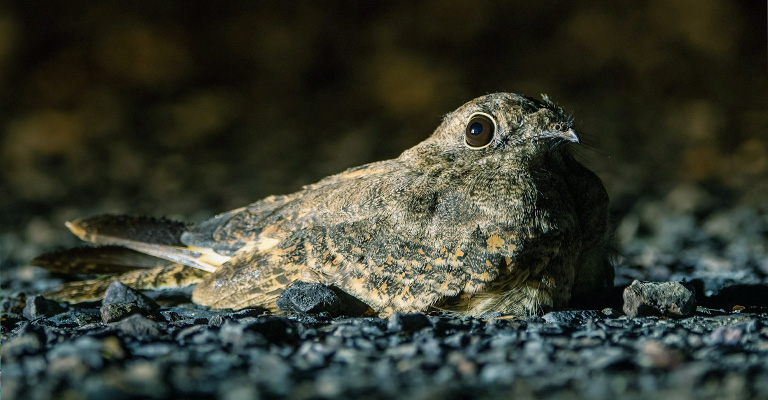
The savanna nightjar, residing in South and Southeast Asia, adds intrigue to Chhattisgarh’s avifauna. This medium-length bird thrives in open forests and scrub landscapes.
Sporting a broad bill and expertly camouflaged plumage, it quietly blends into its environment. It comes alive at night, its unique vocalizations resonating through the dark.
The species includes eight subspecies like monticolus and amoyensis. Conservation efforts focus on preserving its natural habitats, crucial for its survival.
Scientific classification:
| Kingdom | Animalia |
| Phylum | Chordata |
| Class | Aves |
| Clade | Strisores |
| Order | Caprimulgiformes |
| Family | Caprimulgidae |
| Genus | Caprimulgus |
| Species | C. affinis |
38. Oriental Scops Owl
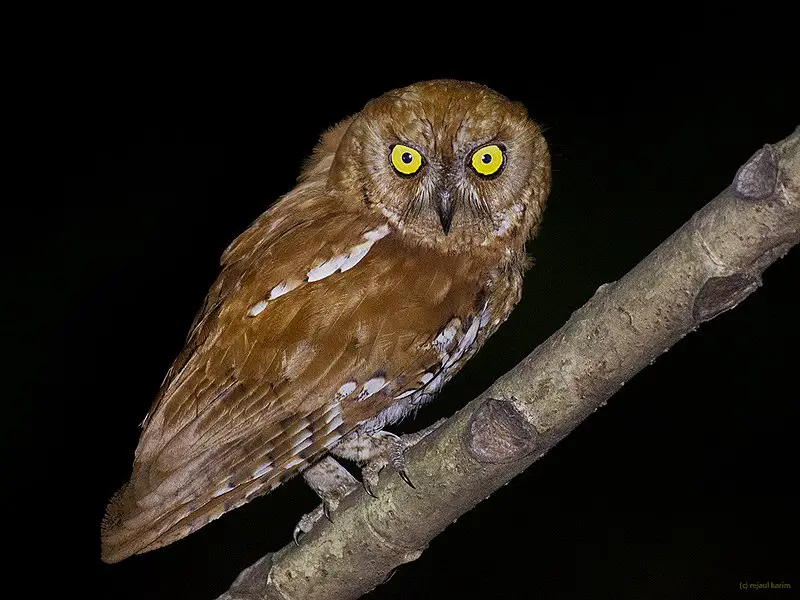
The Oriental Scops Owl, native to Chhattisgarh, displays vibrant colors with yellow eyes and small eartufts. It thrives in eastern Asia’s gardens and deciduous forests, offering a distinct charm with its eerie calls at dusk.
Differentiated by a whitish scapular stripe and variable color forms—grey and rufous—it’s distinguished from the collared scops owl. Insect and small rodent hunting characterize its diet, utilizing acute hearing for precise captures.
Scientific classification:
| Kingdom | Animalia |
| Phylum | Chordata |
| Class | Aves |
| Order | Strigiformes |
| Family | Strigidae |
| Genus | Otus |
| Species | O. sunia |
Also Featured In: Most Common Tripura Birds You Need to Know,
39. White-Naped Woodpecker
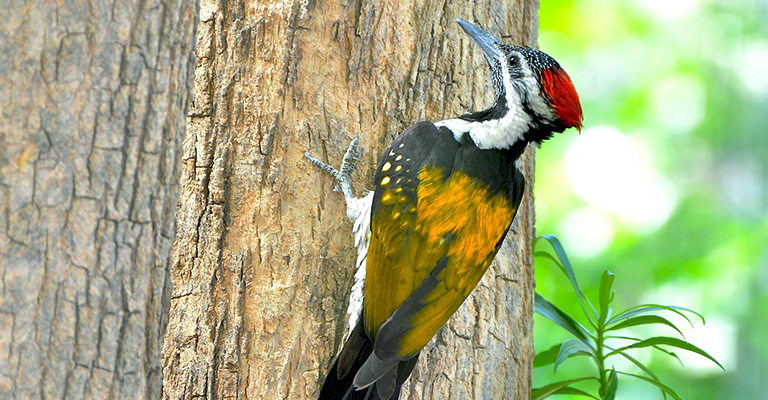
The white-naped woodpecker thrives in the Indian subcontinent’s open forests. Known for its unique breeding habits, it lays one or two white eggs in tree holes.
The bird’s presence across Chhattisgarh adds to the region’s rich biodiversity. Described by Georges-Louis Leclerc, Comte de Buffon in 1780, it remains a scarce breeder but has a wide distribution.
Observers can recognize this woodpecker by its distinct taxonomic classification under the genus Chrysocolaptes, contributing to Chhattisgarh’s ecological tapestry.
Scientific classification:
| Kingdom | Animalia |
| Phylum | Chordata |
| Class | Aves |
| Order | Piciformes |
| Family | Picidae |
| Genus | Chrysocolaptes |
| Species | C. festivus |
Conclusion
Chhattisgarh stands as a vibrant haven for birdwatchers and nature enthusiasts alike. Its diverse landscapes support a remarkable array of bird species, each contributing uniquely to the region’s ecological balance.
From the elusive Indian Nightjar to the striking Bastar Hill Myna, the avian diversity here is a testament to the area’s rich natural heritage.
The commitment to preserving these habitats ensures that both common and rare species continue to thrive.
As birdwatchers explore the region, they not only witness the beauty of these feathered wonders but also engage with the intricate tapestry of life that defines Chhattisgarh’s ecosystems.